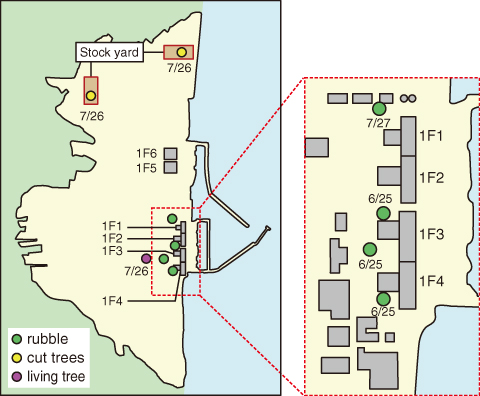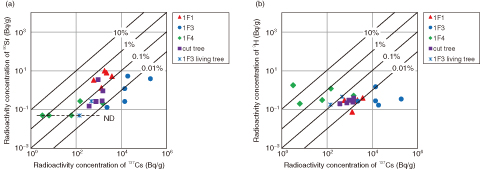
Fig.1-44 Sampling locations of rubble and trees

Fig.1-45 Concentrations of 3H and 90Sr as functions of those of 137Cs
After the accident at the TEPCO’s Fukushima Daiichi NPS (1F, The “Unit 1-6 at 1F” is abbreviated to “1F1-1F6”), huge quantities of rubble and many trees were contaminated by radionuclides, including 137Cs and 131I, which were generated at the site of 1F. To determine a strategy for the treatment and subsequent disposal of the rubble and trees, it was essential to clarify their radionuclide and radioactivity concentrations. To determine the radionuclides in and on the rubble and trees, samples were collected at the location shown Fig.1-44.
Important radionuclides (including α-ray and β-ray emitting radionuclides, which need chemical analysis) were selected based on a safety assessment of the waste disposal. Analytical methods for the important radionuclides have already been developed by JAEA, and applied to various types of radioactive waste generated by research and industrial and medical facilities. We modified the existing analytical methods and analyzed the rubble and trees.
The ratios of the radioactivity concentrations 3H and 90Sr to those of 137Cs determined in this study are plotted in Fig.1-45. As shown in Fig.1-45, the concentration of 3H did not depend on the sampling location. In contrast, the radioactivity ratios of 90Sr to 137Cs clearly depended on the sampling location. The observed results for 90Sr also implied that the 90Sr/137Cs ratio was different for each Unit of 1F. We are establishing methods for the treatment and disposal of radioactive waste on the basis of this data.
This study was sponsored by the Agency for Ministry of Economy, Trade and Industry of Japan (METI) in the FY 2013 and 2014.